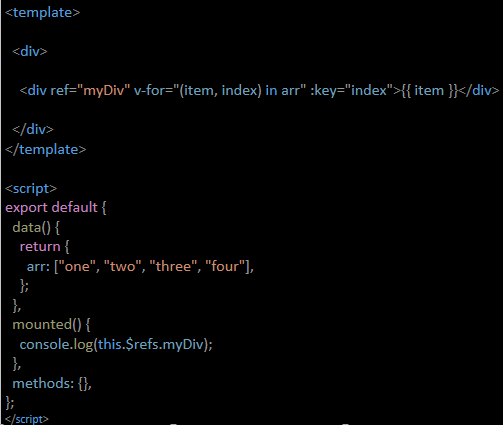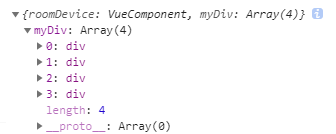在JavaScript中需要通过document.querySelector("#demo")来获取dom节点,然后再获取这个节点的值。在Vue中,我们不用获取dom节点,元素绑定ref之后,直接通过this.$refs即可调用,这样可以减少获取dom节点的消耗。
ref被用来给元素或子组件注册引用信息。引用信息将会注册在父组件的 $refs对象上。如果在普通的 DOM 元素上使用,引用指向的就是 DOM 元素;如果用在子组件上,引用就指向该子组件实例
通俗的讲,ref特性就是为元素或子组件赋予一个ID引用,通过this.$refs.refName来访问元素或子组件的实例
<p ref="p">Hello</p>
<children ref="children"></children>
this.$refs.p
this.$refs.children
this.$refs是一个对象,持有当前组件中注册过 ref特性的所有 DOM 元素和子组件实例
注意: $refs只有在组件渲染完成后才填充,在初始渲染的时候不能访问它们,并且它是非响应式的,因此不能用它在模板中做数据绑定
当ref和v-for一起使用时,获取到的引用将会是一个数组,包含循环数组源


子组件:
<template>
<div>{{msg}}</div>
</template>
<script>
export default {
data() {
return {
msg: ‘我是子组件‘
}
},
methods: {
changeMsg() {
this.msg = ‘变身‘
}
}
}
</script>
<style lang="sass" scoped></style>
父组件:
<template>
<div @click="parentMethod">
<children ref="children"></children>
</div>
</template>
<script>
import children from ‘components/children.vue‘
export default {
components: {
children
},
data() {
return {}
},
methods: {
parentMethod() {
this.$refs.children //返回一个对象
this.$refs.children.changeMsg() // 调用children的changeMsg方法
}
}
}
</script>
<style lang="sass" scoped></style>
原文:https://www.cnblogs.com/hellocd/p/14255687.html